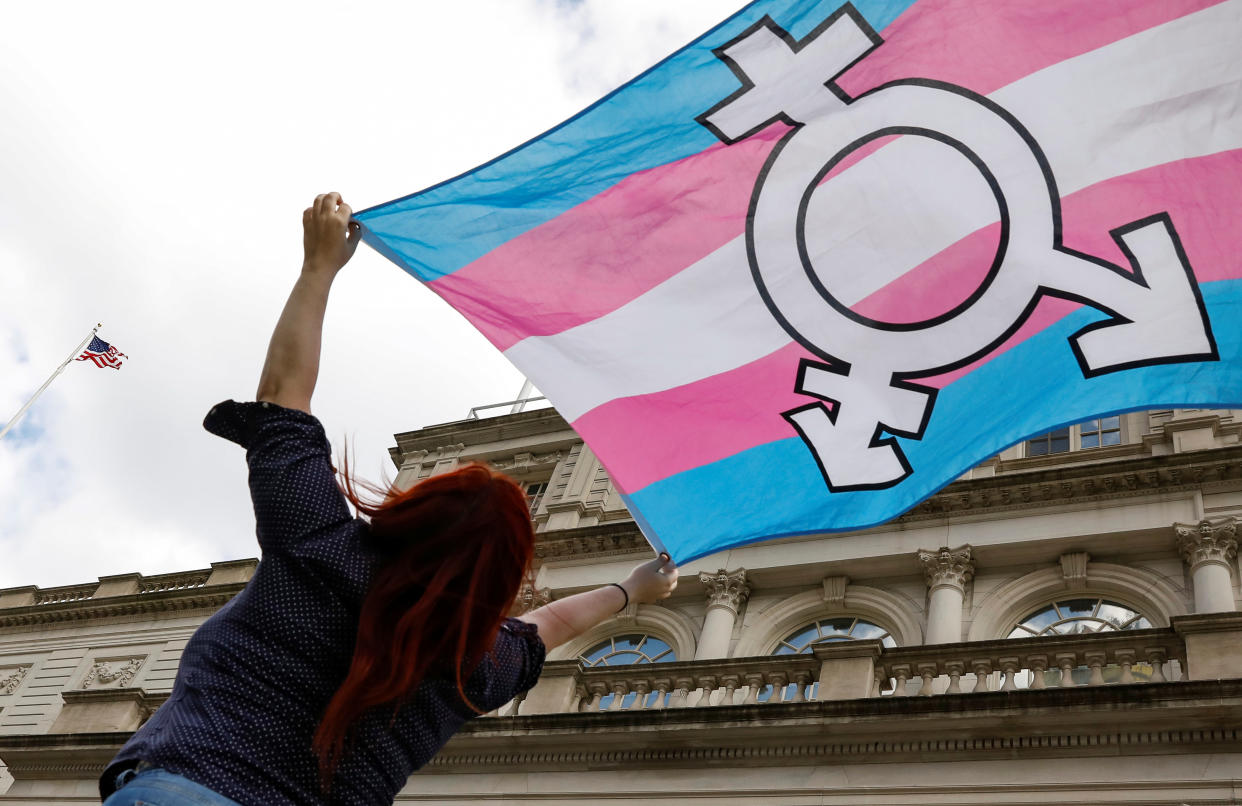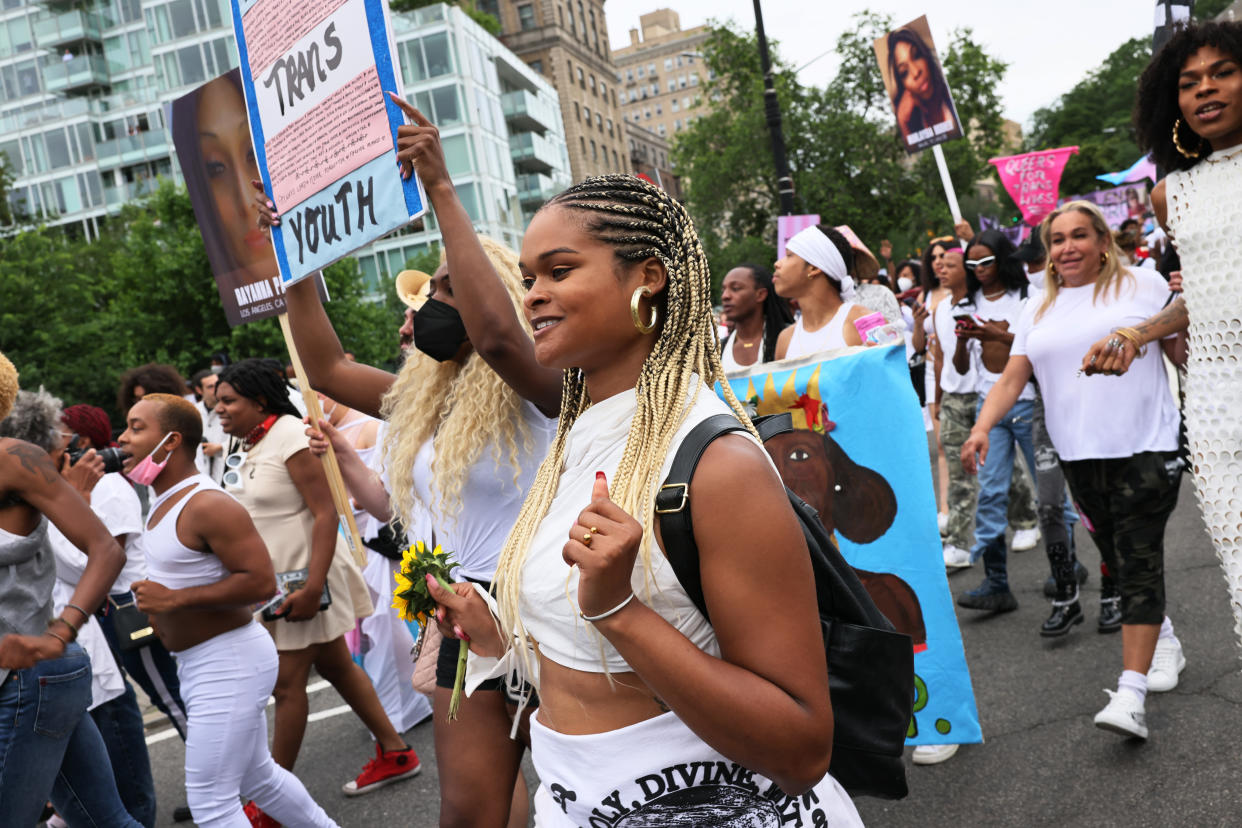More than 5% of Americans under 30 now identify as transgender or nonbinary, new research finds

More than 5% of U.S. adults under the age of 30 identify as transgender or nonbinary, according to new findings released by Pew Research Center on Tuesday, while 1.6% of U.S. adults of all ages fall into that category, meaning that their "gender is different from the sex they were assigned at birth."
Within that 5.1% of young adults, 2% are trans and 3% are nonbinary — with an even higher 3.1% of young adults under 25 identifying as transgender.
Meanwhile, more than 4 in 10 people (or 44%) say they know a trans person — up from 42% in 2021 and 37% in 2017. About a quarter of U.S. adults say they are friends with a transgender person. And the numbers are even higher among younger adults (both younger than 30 and those 30 to 49), half of whom say they know a trans person — but still, a third of those 65 and older report knowing someone who is trans.
And 20% (or 1 in 5) of respondents say they know someone who identifies as nonbinary.
"Anti-trans rhetoric and legislation is being pushed by extremists across the country because they need a political target to paint as scary and other — as more Americans come to personally know the trans and nonbinary people in their lives, they can recognize these attacks for what they are: A campaign of hate based on lies," Olivia Hunt, policy director with the National Center for Transgender Equality, tells Yahoo Life. The findings about how many people know a trans person, she adds, "make it clear that trans people can be known and out as ourselves, and that we have our place in our communities."
Video: Biden addresses those celebrating Transgender Day of Visibility
Why having this data matters
Having such population data in general is important "because it helps us push for better recognition and representation in government and in daily life," Hunt says. "Showing the number of people in the U.S. who are transgender makes it clear that we exist, and that our issues need to be taken seriously."
While anyone paying attention to current news and pop culture will have certainly noticed the existence of transgender and nonbinary people — in spheres from entertainment to politics — there has been an absence of solid, up-to-date data, with past studies, mainly from 2016, finding that anywhere from 0.3% to 0.6% of U.S. adults identified as transgender (not taking those identifying as nonbinary, a more recent term, into account). That Pew Research found a significant rise here is not surprising to Hunt.

"Transgender people have always known we’ve been undercounted in population studies," she says, "whether it’s because questions were asked in ways set up, either designed or accidentally, to not capture all transgender people's information — but also because you have trans people not wanting to out themselves to survey takers … for fear of discrimination … as well as a lot of people who were not able to be out as transgender."
Now more trans people might feel more empowered to be themselves, thanks to several factors, including people being able to get an "X" gender marker on identification documents, being able to more easily update gender on a driver's license in most states, finding transgender medical care more easily and having "a president who acknowledges and celebrates the existence of trans people," Hunt points out.
Other findings from the survey
Pew conducted its survey of 10,188 U.S. adults between May 16 and May 22, and weighted it to be representative of the U.S. adult population by gender, race, ethnicity, partisan affiliation, education and other categories. It was part of a larger study, more results of which will be released later this summer.
Some of the new findings were politically divided, with Democrats and independents who lean Democratic more likely than Republicans and Republican leaners to say they know a transgender person. "But Republicans are catching up," the report notes.
"We have been measuring some of these things since 2017, such as the percentage of people who know someone trans," Pew research associate Anna Brown tells Yahoo Life. "And one interesting thing is even just since 2021 some of the change there has been driven by Republicans." In June 2021, 48% of Democrats said they knew a trans person, compared with 35% of Republicans — a gap of 13 percentage points. Today, the same 48% of Democrats and now 42% of Republicans say this, closing that gap to just 6 points.
Another factor was age: Most Americans (79%) say they have heard at least something about the concept of “nonbinary” or “gender fluid” to describe their gender, but only 26% say they have heard a lot about this concept. Young adults, meanwhile, are far more likely to be familiar with this idea: About 4 in 10 adults younger than 30 (42%) say they have heard a lot about being nonbinary, compared with 31% of those 30 to 49, 20% of those 50 to 64 and 12% of those 65 and older. Still, even older adults have at least a slight familiarity, as two-thirds of those 65 and older say they have heard at least a little about the term.
In addition to the population counts, Pew researchers took an extra step to find out about the personal experiences of trans and nonbinary Americans by setting up small focus groups totaling 27 multiracial trans and nonbinary people, ranging in age from late teens to early 60s. "These topics have been part of the national conversation for years now, so conducting the focus groups allowed us to learn more about transgender and nonbinary people in their own words," says Brown.
Topics of discussion in the focus groups covered: identity and the gender journey, including using terms like "trans femme," "gender fluid" and "masculine," and how many people knew they were trans at a very young age compared to others who were not sure until adulthood; navigating gender on a day-to-day basis, such as deciding when to come out and when to pass as cisgender, based on the perceived safety of a situation; and medical care, such as whether or not they had undergone treatments, including hormone therapy or surgery, and why or why not.
Hunt says she finds it "reassuring" that Pew has gone beyond the numbers to look at "nuances" and "distinctions" among individuals. "Breaking it down like this helps to show that trans people, like other minorities, are not a monolith," she says. "We are a lot of people with a lot of experiences and journeys, and all trans people will have a different story."
Want lifestyle and wellness news delivered to your inbox? Sign up here for Yahoo Life’s newsletter.
